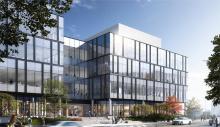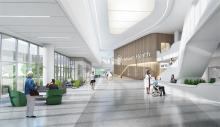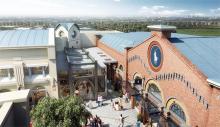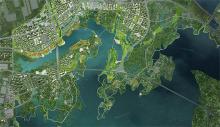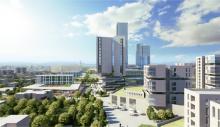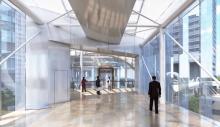Design Advantages of 3D Architectural Animation and Animation Production Process
Ⅰ. The advantages of 3D animation architecture design
1. The most intuitive way of communication
Architectural animation technology is used as a display tool for large-scale projects to construct a realistic three-dimensional dynamic model to display the internal and external spaces and functions of the building in an all-round way. In the application, approval, publicity, communication, and sales, the target audience has a strong interest, and the demands of the project planner are more easily recognized by others.
2. The most convenient design tool
It reflects the designer's thoughts in a visual form. Architectural animation technology can turn the idea into a visible virtual object and environment, so that the traditional sand table design model can only be used in the past to upgrade to the digital perfect state of what you see is what you get. This greatly improves the quality and efficiency of design and planning.
3. The fastest approval platform
Architectural animation provides an intuitive approval platform, allowing approvers to experience the completed landscape immersively. This can speed up the approval process of the project, thereby gaining valuable time for the start of the project.
4. The most advanced marketing methods
The application of 3D animation architecture design technology brings a strong sense of reality and presence to the target customers, so that ordering decisions can be made faster and more accurately, and the speed of product sales is greatly accelerated. At the same time, architectural animation technology can also be applied to the network and multimedia to spread product information more conveniently and quickly.
Ⅱ. The production process of 3D animation architecture design
1. Build a model
After the preparatory work is completed, you can start modeling. First establish the model of the main body of the 3D architectural animation design, and then simply make the minor ones. Remember that the model should be as concise as possible.
2. Set up lens animation
After the basic model is completed, first adjust the camera animation according to the script design and performance direction. When there are only themed buildings in the scene, you must first set the camera animation, and then set the other object animations.
3. Textured lighting
When making architectural animation, materials and lighting are very important to the effect of the entire animation, and will directly affect the real and visual effects of the entire animation. This is also a very complicated production and adjustment process. After the animation of the model is completed, assign materials to the model before setting up the lights. Then adjust it according to the direction set by the camera animation.
4. Environment import
After adjusting the texture and lighting, add the environment.
5. Rendering output
After model building, animation production, material and lighting adjustment, the scene model can be converted into video or image through architectural rendering animation. Choose different renderers according to different needs, and then render animations of different sizes and resolutions according to the production needs.
6. Post-processing
After rendering the sequence frame, we need to import it into the post software for color correction and add special effects to make the 3D architectural animation design more impactful. After rendering, use post software to modify and adjust.
7. Non-edited output
Finally, the animation of the shots is added in order, the transition is added, and the required format is input after editing.

